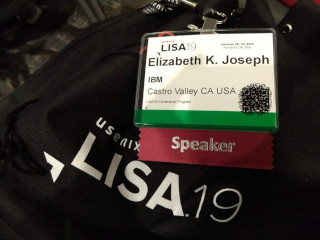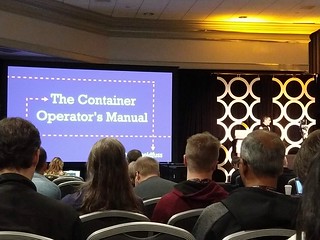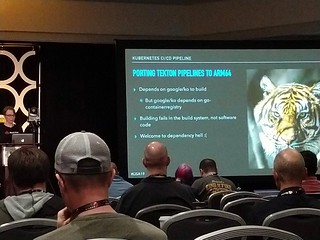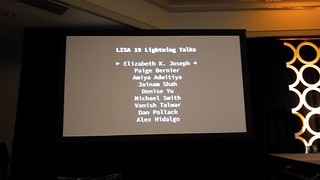At the end of October I traveled up to Portland, Oregon to participate in LISA19.
LISA is a conference I’m very fond of because of the real focus on systems administration, rather than software development, and so there are typically more talks that are applicable to my trade. This year it was also particularly valuable due to the number of folks there who I discovered had administration experience with mainframes. Some still worked on them in the financial or government sectors, and were interested when I mentioned the DevOps tooling and open source efforts currently underway to improve automation and to make them feel like a more modern platform. It was a nice change from many of the 101 conversations I have with my typical Linux sysadmin peers who I’m talking to about being open to trying out the platform.
Talk-wise, I was really happy with their series of keynotes. The event kicked off with a keynote by Alice Goldfuss on “The Container Operator’s Manual” where she implored the audience to be more thoughtful about their adoption of containers. They aren’t a panacea, you need to consider the workloads appropriate for containers, and you need to hire a team that’s sufficiently large and skilled enough to manage the infrastructure. Thank you! Right after her talk, we heard from Rich Smith who, coming from the security community, was seeking to make a connection with the systems community on how we can better collaborate and serve users more effectively, and securely.
I think my favorite talk of the event was from Lisa Seelye on “Multi-Architecture Container Images: Why Bother, and How To” where she talked about the ability for containers to be built for non-x86 hardware and some of the challenges you bump into when you start building and using them for an architecture like Arm64. As she unpacked some containers that claimed to be built for Arm, her experience mirrored my own with s390x as you bump into inconsistent or incomplete architecture specifications and dependency issues. She did a nice demo of taking one apart and rebuilding it properly to run her Arm system, which was pretty cool. The conference has made the slides and video available on her talk page here.
One of the reasons I attended was to give a lightning talk! My topic was 20 years of Linux on the mainframe, a topic I’ve covered before, but it was a lot of fun to squeeze it into a 5 minute talk with auto-advancing slides where I had to distill the core of the story quickly. Slides will be familiar to anyone who has already seen the longer version of my talk, but you can see them here.
I was also able to chat with the Fedora Project Leader about build systems for Fedora. My goal is to see public build systems that include the ability to build for s390x for all the major distributions. Ubuntu has Launchpad and Snapcraft, both of which support it. SUSE has the openSUSE Build System, which not only supports s390x, but builds for multiple distributions, making it a one stop shop for most needs. Still, people use what’s familiar to them distribution-wise and Matt pointed me in the direction of Copr, which doesn’t have s390x support yet, but this does seem to be the right place to be when I can carve out some time to reach out to see about how they can get resources to do so. And while on the topic, Fedora 31 came out during the conference too, and of course that has s390x support, and has since version 15 in 2011.
In all, it was probably one of the most rewarding conferences for me this year, and I’m really glad I went. Next year it’ll be in Boston in December and co-located with SRECon. It makes a lot of sense, there is considerable topic overlap and I think both events will be valuable to most attendees> Still, it will change the feel of the current standalone event, which is on the smaller side.
More photos of the event can be found here: https://www.flickr.com/photos/pleia2/albums/72157711953477788/





